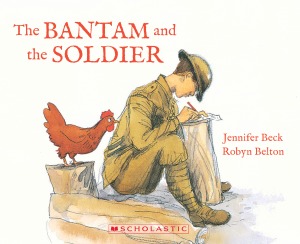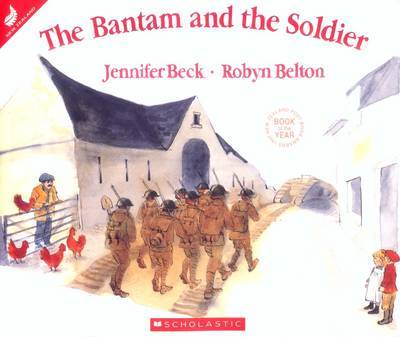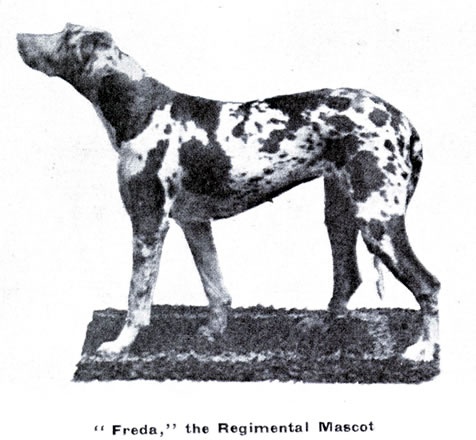The bantam and the soldier by Jennifer Beck and Robyn Belton (Scholastic, 2014; first published 1996)
ISBN 978 1 77543 207 4
32 pages with
extra illustrations at front and back
Subjects:
World War One, France, animals, hens, mascots, picture books (Year 3-8)

Synopsis
This
is a redesigned and rejacketed edition of a book which many people will already
know and love, and which won New Zealand Children’s Book of the Year in 1997.
It tells the story of “the smallest bantam” on a French farm, abandoned as the war gets closer, and a shy, homesick farmer’s son called Arthur “from a country on the other side of the world”. Arthur saves the starving bantam, feeds it and looks after it and names it Bertha after his niece back home. At first the other soldiers make fun of him, but then they adopt Bertha as a mascot too and start to hunt out grubs and worms for her. Bertha rewards them each day with “a warm, brown egg” and her resilience gives them courage and hope.
It tells the story of “the smallest bantam” on a French farm, abandoned as the war gets closer, and a shy, homesick farmer’s son called Arthur “from a country on the other side of the world”. Arthur saves the starving bantam, feeds it and looks after it and names it Bertha after his niece back home. At first the other soldiers make fun of him, but then they adopt Bertha as a mascot too and start to hunt out grubs and worms for her. Bertha rewards them each day with “a warm, brown egg” and her resilience gives them courage and hope.
Look
out for the names “In memory of” on the front flap (Jennifer Beck’s great
uncle, killed in action in WW1; Robyn Belton’s grandfathers who served in WW1
and her uncles who died in active service in WW2.) The additional illustrations
at front and back include soldiers’ photographs, sketches and war posters and
postcards.
The
Acknowledgements show the research that went into this book, and the
Author’s note reveals some of the true history behind it.
This was the original cover:

Reviews:
"Among a number of fine New Zealand stories about the First
World War, The Bantam and the Soldier stands out because of its superb
illustrations. The picture book for older readers is a growing genre in
children’s literature, and is an excellent development. Pictures, especially
about an historical setting, often convey so much more than words. Belton’s
sensitive drawings show something of what it was like to be in the front line
in 1917. In the trenches Arthur managed to keep his sanity by caring for a
bantam hen he found trapped in a hedge after an explosion. When Arthur returned
to New Zealand he (like so many soldiers) did not want to talk about his war
experiences, but he found he could tell the story of Bertha the bantam…and
that, too, was therapeutic."
(Susan Price)
Author’s website
You can read about Jennifer Beck on the NZ Book Council website and on Christchurch City Libraries Interviews with NZ children's authors.
Info about the illustrator
You can read about Robyn Belton on the NZ Book Council website and on her Storylines profile. Interestingly, her first
storybook was The Duck in the Gun, written by Joy
Cowley, which won the Russell Clark Award in 1985. This book, with its powerful anti-war
message, soon established an international following and was one of
ten children’s books selected for the Hiroshima Peace Museum.
Other books you might like
The Anzac puppy by Peter Millett and Trish Bowles also tells the story of a soldier who is helped to survive the war by a pet
that he has saved.






